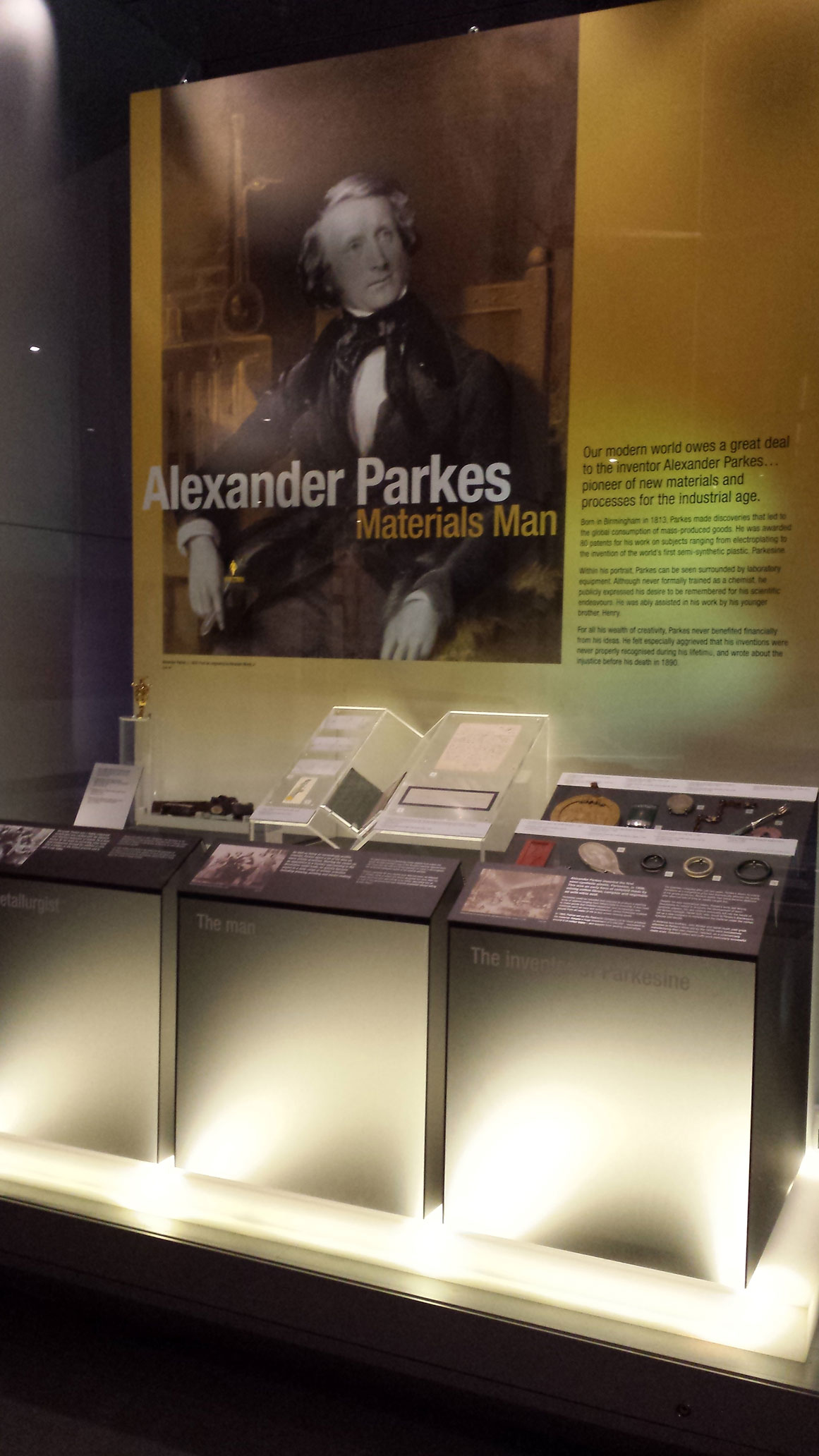As an Assistant Curator, I get the opportunity to work with thousands of objects – from early supercomputers to model steam engines – to bring their stories to life. About eight months ago I started working on a small display celebrating an anniversary in science, technology, engineering or medicine.
Representing the scale of discovery, invention or the life of an important figure in science in a 2 x 3 meter showcase was going to be a challenge. Not deterred I thought this case was the perfect size to celebrate the life and work of the often forgotten 19th century inventor Alexander Parkes.
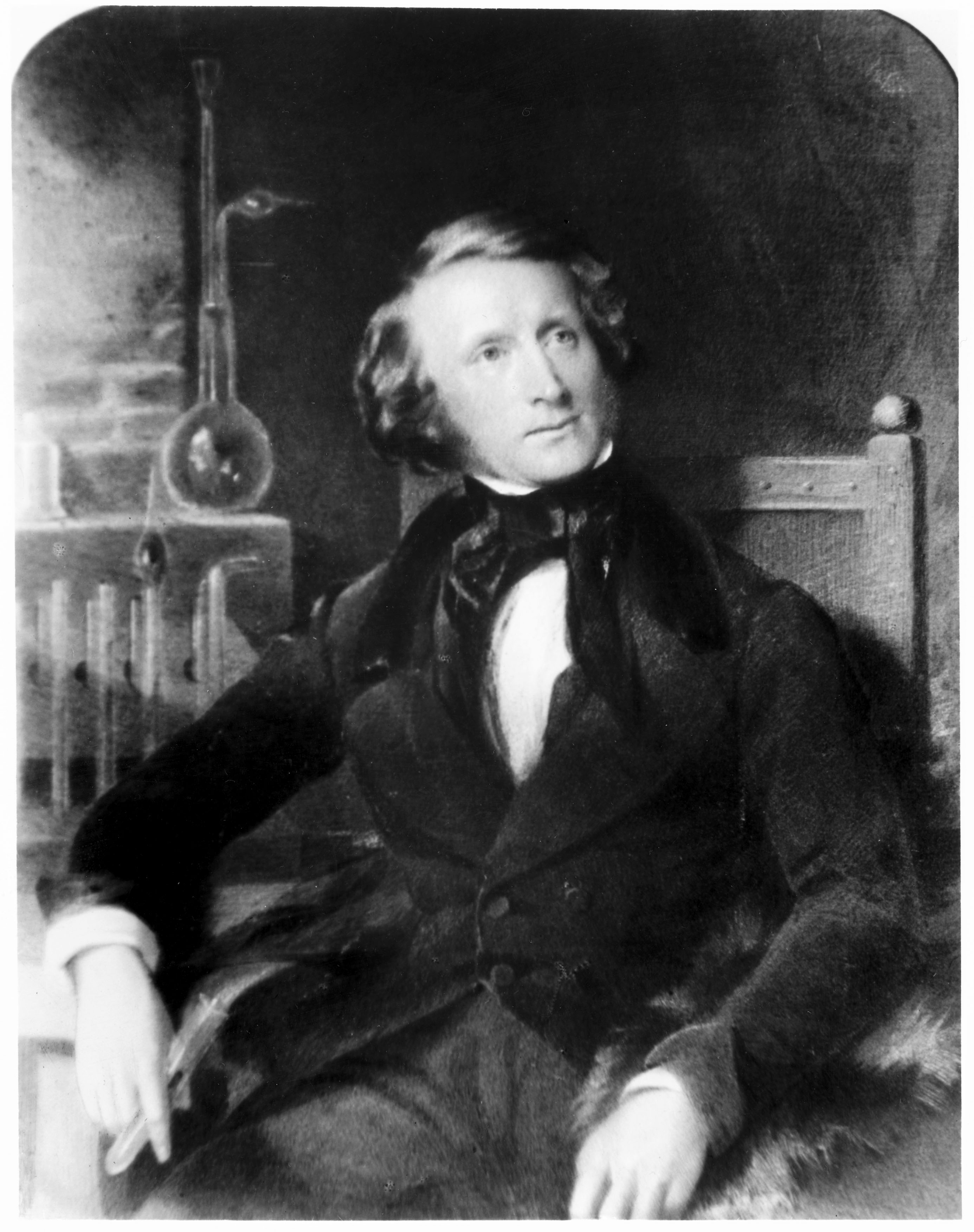
Parkes was born 200 years ago last month (read more about him here) and contributed to a vast range of metallurgical and material developments. Awarded a whopping 80 patents, Parkes’ work ranged from electroplating works of art to developing the first semi-synthetic plastic, Parkesine.
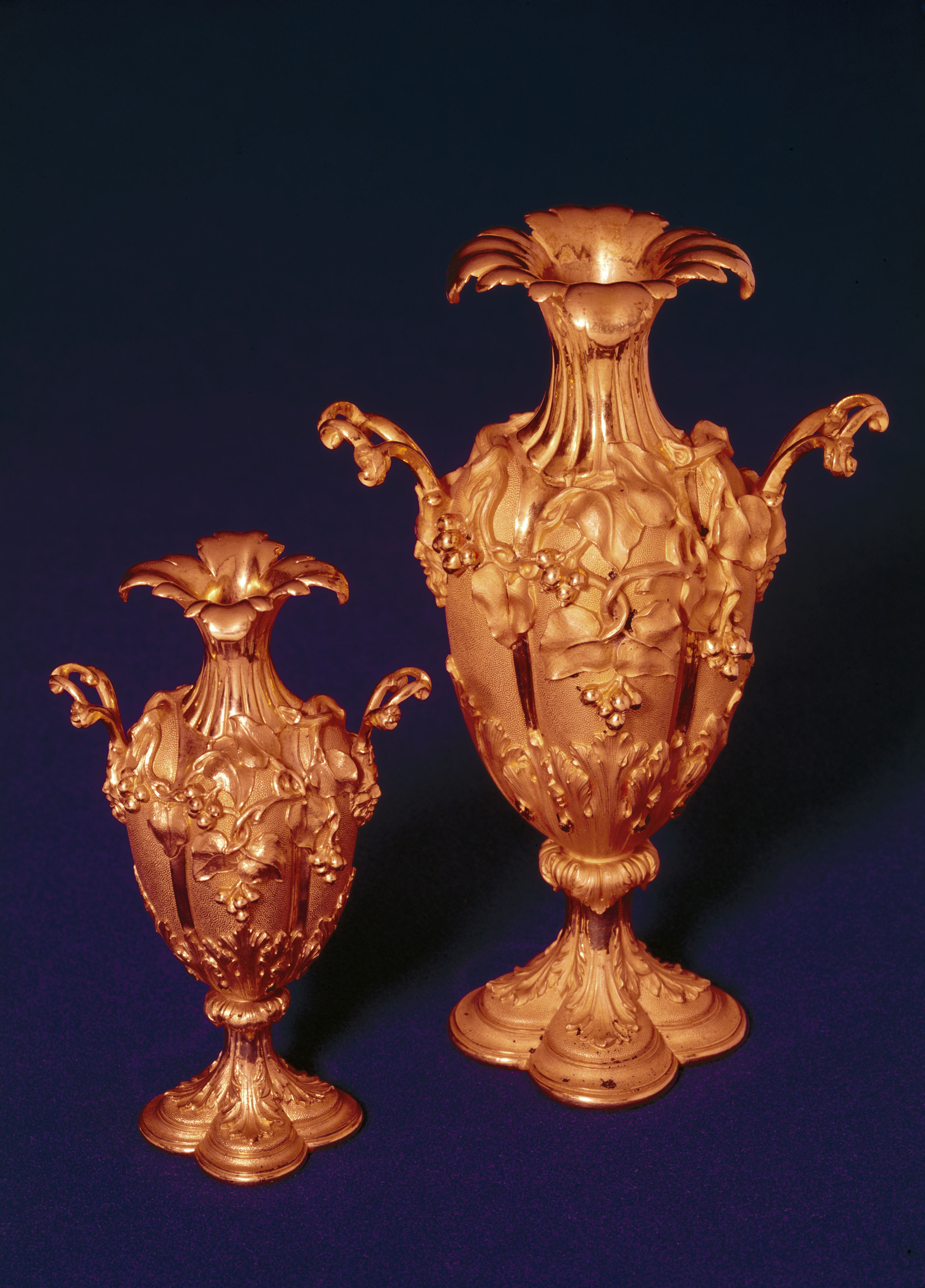
We wanted to show both sides of Parkes, one as Parkes experimenting in his laboratory, and the other as Parkes the talented craftsman. All the objects in the display show the interplay between these skills. The most eye catching and shiny object on display is an electroplated vase that Parkes made early in his career while working at Elkington and Co. in Birmingham. Next to that are bars of copper produced during the Parkes’ process, a method of extracting valuable metal from lead.
While working on the project I found Parkes’ legacy hiding around every corner, or at least painted on the walls.

Bread Collective and the community of Hackney Wick worked together on The Walls Have Ears project to paint a mural celebrating the industrial history of the area. Why, you may ask is Parkesine, a Birmingham inventor’s miracle material, immortalised on a wall between wasteland and an Overground station? The answer is the Parkesine Company Ltd, opened in Hackney Wick in 1866 to commercialise Parkesine.
During the 19th century, desirable materials such as ivory, ebony and tortoiseshell became increasingly rare and expensive. A sustainable replica was required to meet the demand. Not only could Parkesine imitate expensive materials it also changed the face of consumerism and mass-produced goods.
Cheap to produce but moulded into the finery of the day – imitation ivory mirrors or tortoiseshell jewellery – Parkesine opened the door to people from all walks of life to be the proud owners of fancy-looking goods. Analogous to today’s high street stores imitating designer clothes and accessories. We may proudly walk around in Pri-marni now, but Parkes was changing social aspirations over 150 years ago.
Despite Parkes’ enthusiasm and his ability to raise £100,000 (worth £10 million today) from the great industrialists of the time, the factory filed for bankruptcy after two years. Parkes’ desire to compete against natural rubbers and keep his investors happy affected the quality of the goods produced. There are records of combs deforming after a few weeks and other items exploding!
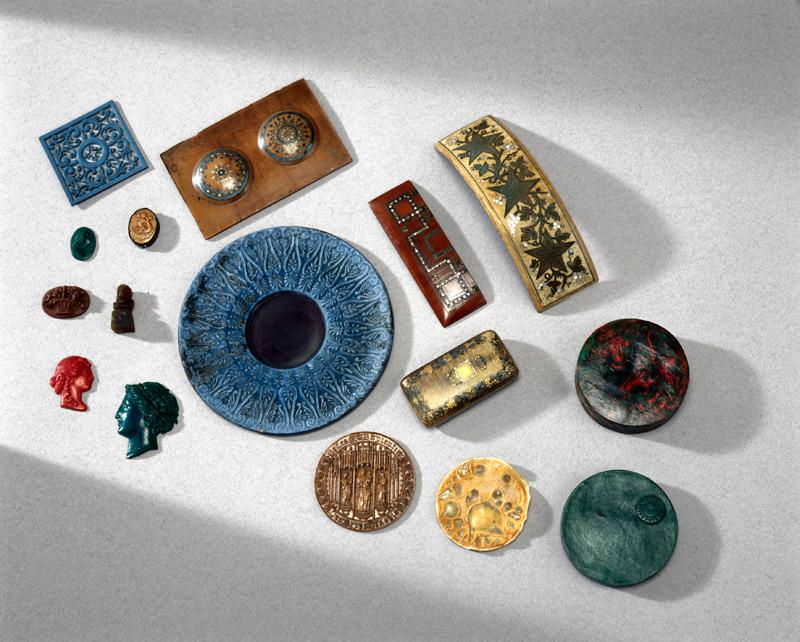
The final group of 14 objects on display reflect the range of objects Parkes made, from jewellery to cutlery, along with the enchanting variety of coloured pigments used.
One of my favourite objects is a toothed wheel made out of black Parkesine. If used, this small item was more likely to set your factory alight than run machinery! Parkesine is a combination of organic matter – cotton fibre – mixed with chemical nitrates, vegetable oils, camphor and alcohol. When nitrates get hot they have a tendency to explode, so using Parkesine for anything that creates friction is asking for trouble.
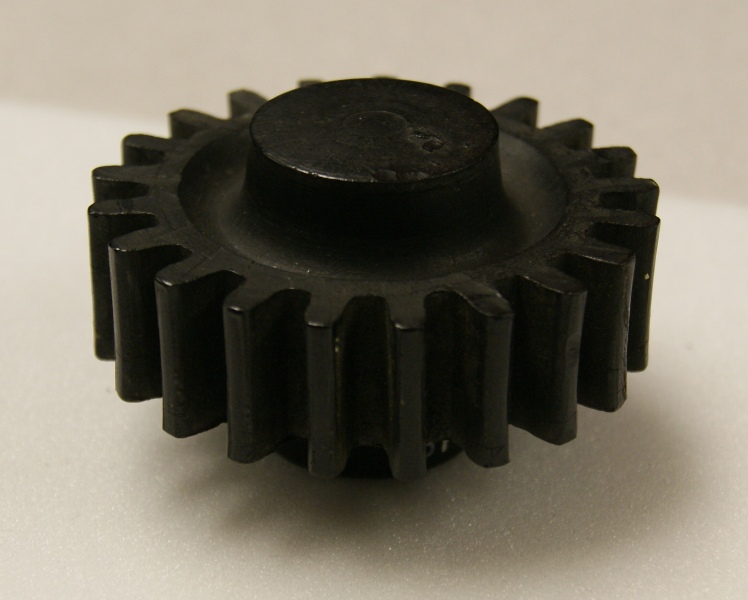
Lucky, the Science Museum also looks after the notebooks of Alexander Parkes in our Archives at Wroughton. Parkes’ scribbles in these notebooks shows more than just his dedication to rigorous experimentation. Imbedded between the pages listing chemical combinations are delicate sketches of British landscapes. This material, along with the objects in store was integral for the 3D and 2D designers without whom this case would not look so captivating.
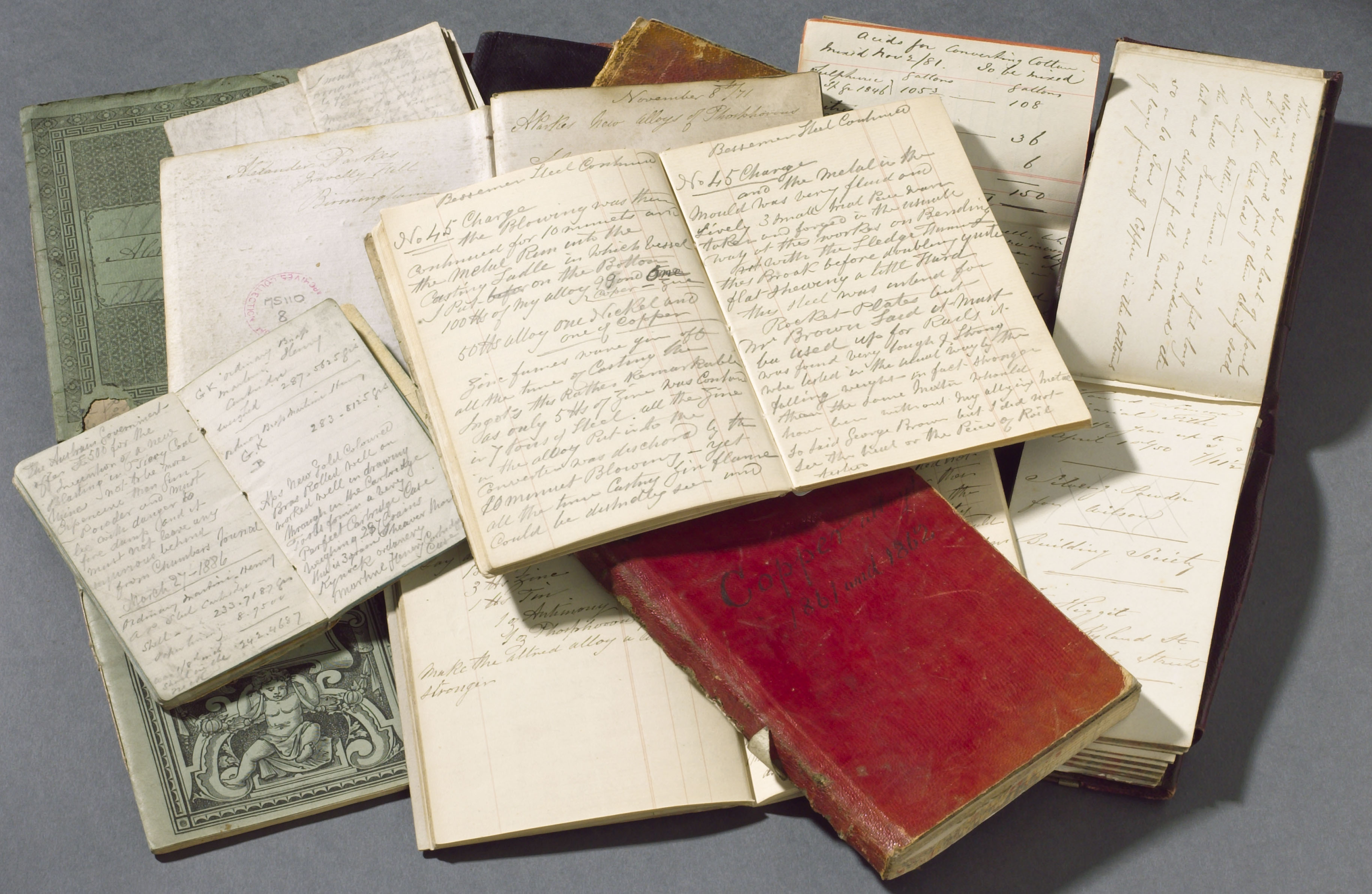
Producing a display like this is a team effort, with many departments helping to turn hours spent researching and rummaging through stores into a display for visitors. The workshops team were up at the crack of dawn to build and install the display and the conservation team were involved from the start to ensure the objects would be safely displayed. Finally, after months of writing and rewriting text, the ribbon was cut and my first showcase was opened.
